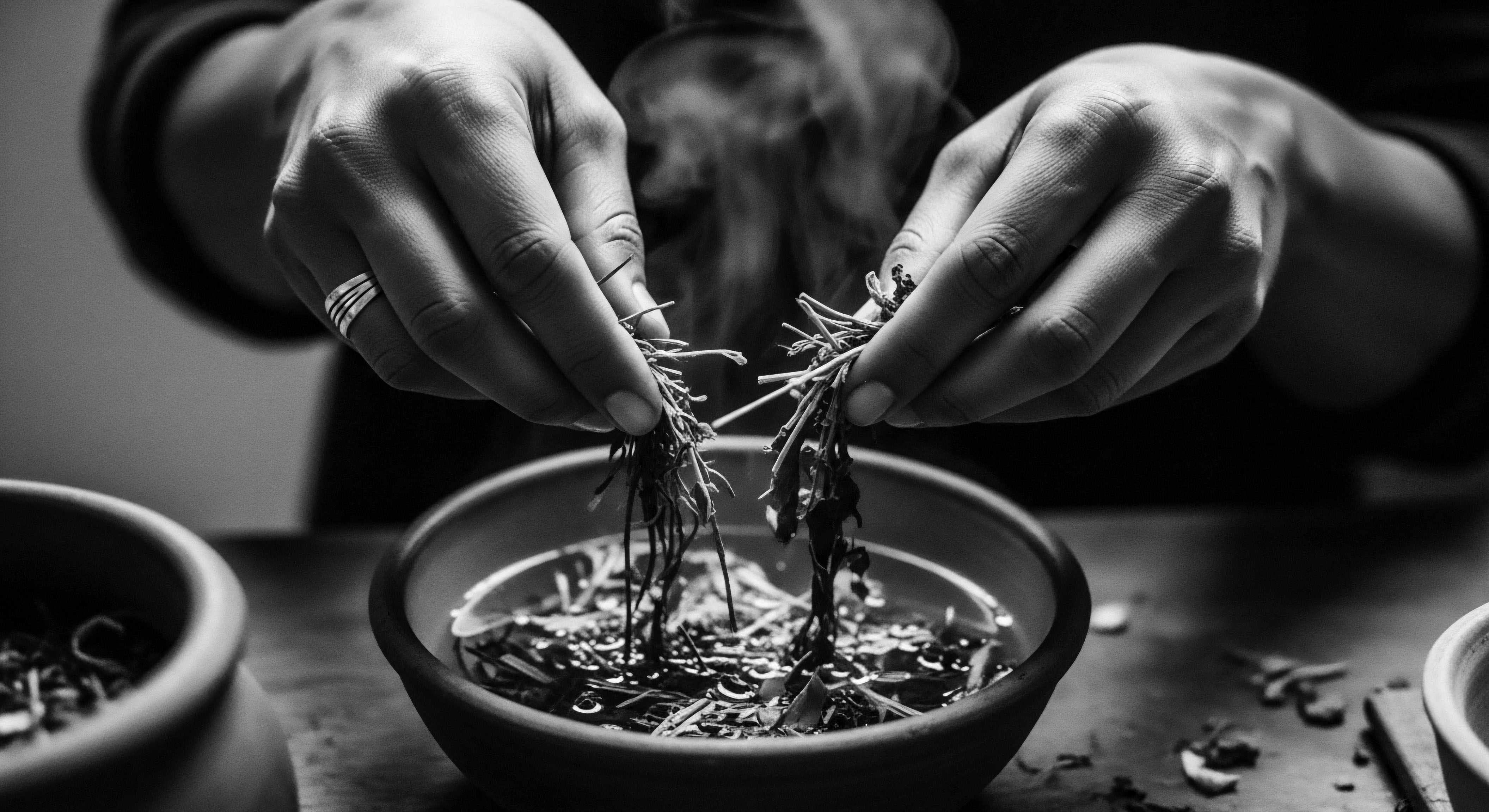
Roots
Consider, for a moment, the very strands that spring from your scalp. Each coil, each curve, each gentle wave holds within it a living memory, an ancestral echo. For those with textured hair, this isn’t merely a biological reality; it’s a profound connection to a lineage stretching back through the mists of time, a heritage whispered from one generation to the next. The inquiries into how ancient civilizations cared for their textured hair become not simply academic exercises, but invitations to walk alongside our foremothers, to understand the wisdom embedded in their daily rituals, to witness the quiet resilience of a people whose very crowns spoke volumes.
The earliest records of human civilization, particularly within the cradle of Africa, reveal a deep reverence for hair. It was often seen as a conduit for spiritual energy, a marker of social standing, or a declaration of tribal identity. Understanding its fundamental nature, its unique architecture, informed every decision about its treatment. Ancient peoples, long before the advent of modern chemistry, possessed an intuitive grasp of what their hair needed to thrive, knowledge born from observation, experimentation, and deep respect for the natural world around them.
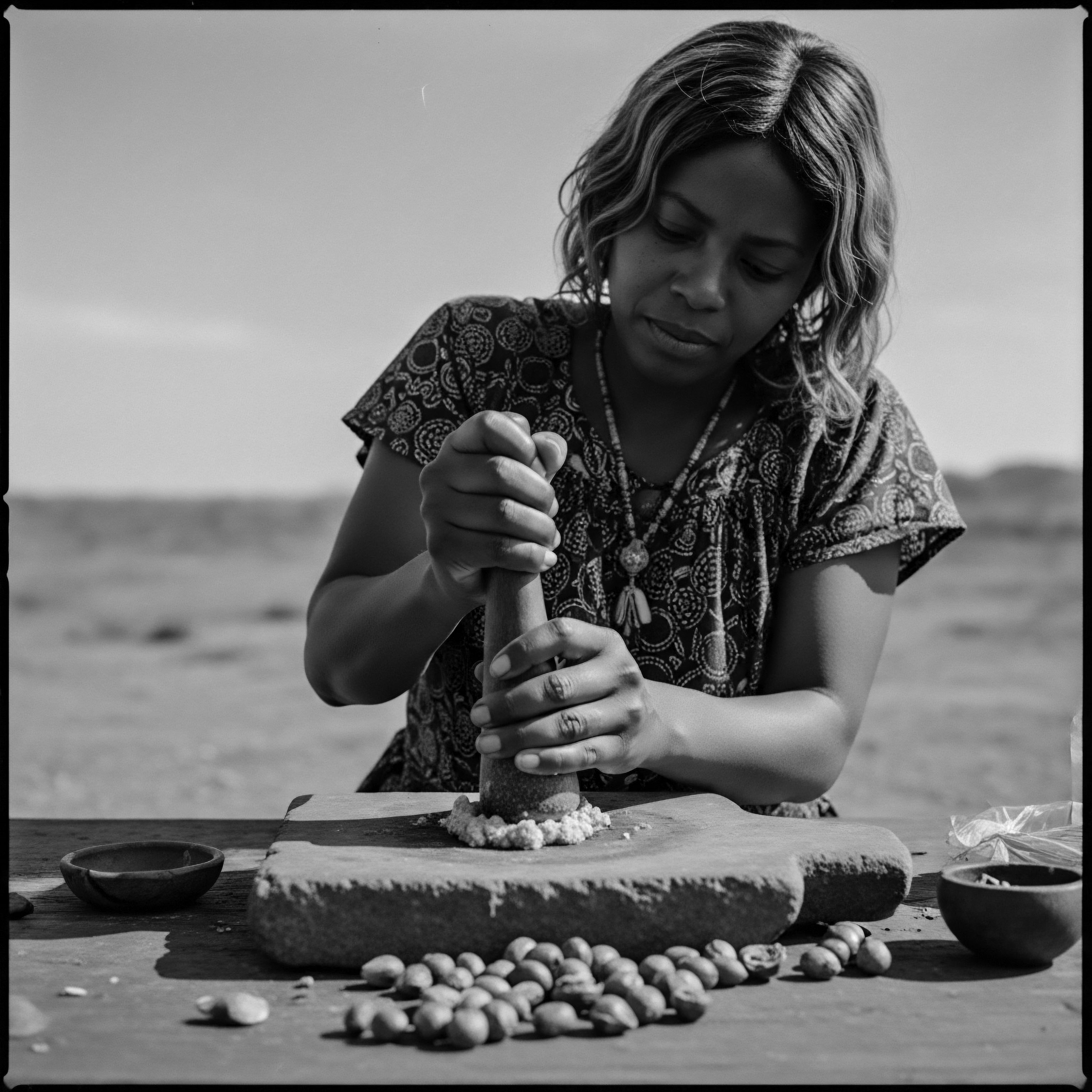
Anatomy and Ancestral Understanding of Textured Hair
When we consider the physical composition of textured hair, we find that its unique helical structure, its tendency to grow in tight curls or distinct coils, presents particular needs. The elliptical cross-section of the hair shaft, a characteristic prominent in many textured hair types, contributes to its natural elasticity and curl pattern. This structure also means that the outer layer, the cuticle, is often lifted or fractured at the bends of the coil, making it more vulnerable to moisture loss and mechanical stress.
Ancient practitioners, while lacking electron microscopes, observed these traits through lived experience. They recognized, for instance, that textured hair seemed to dry out more quickly in arid climates, or that certain manipulations caused breakage. Their remedies, therefore, often centered on principles of lubrication, protection, and gentle handling, practices that resonate with contemporary understanding of textured hair health. The very act of caring for one’s coils became a practice of honoring its inherent characteristics, a recognition of its ancestral blueprint.
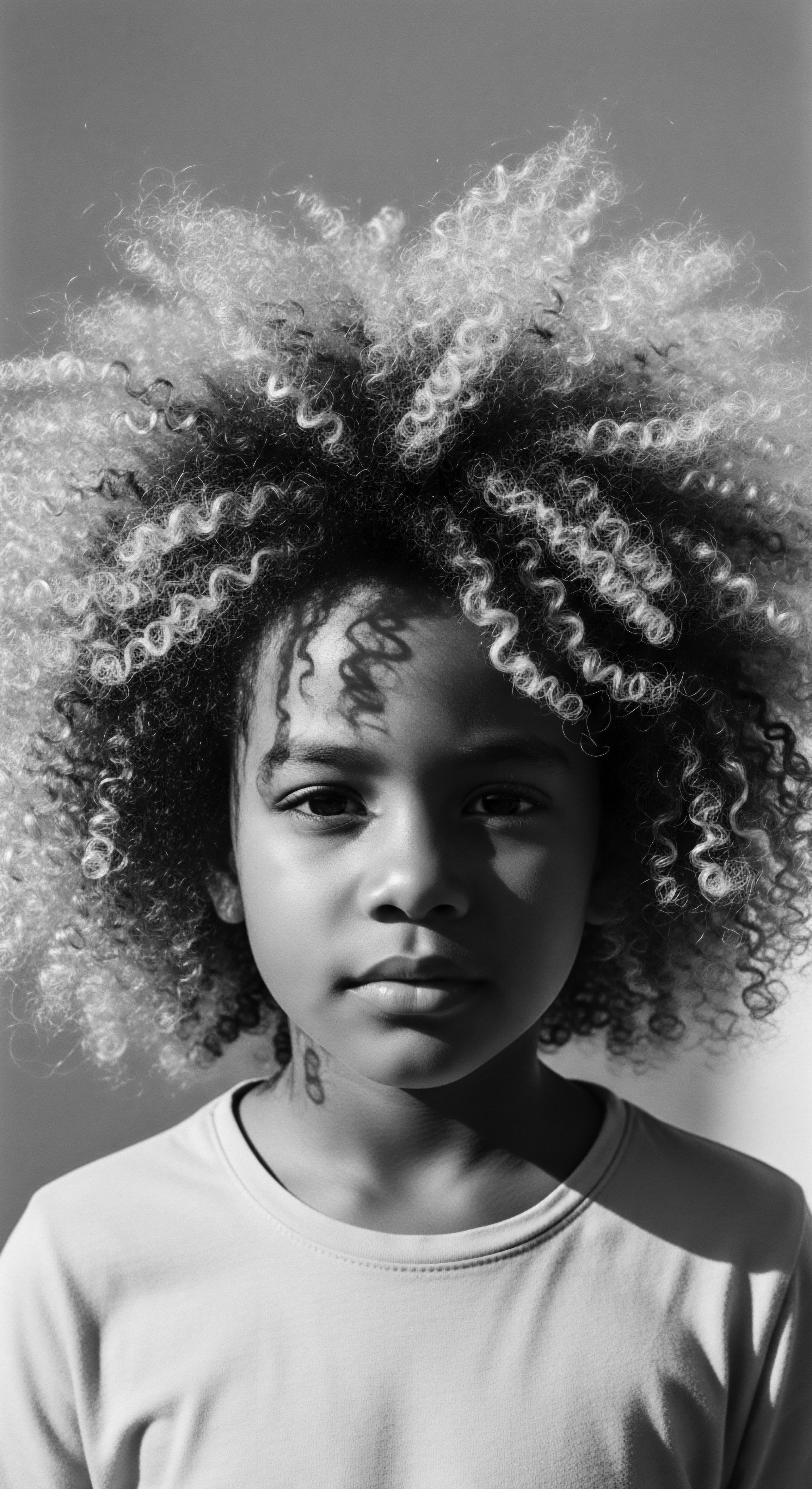
Classifying Coils and Cultural Expressions
Modern systems of hair classification, while useful for some purposes, often fail to capture the profound cultural nuances associated with textured hair types across history. Ancient societies, however, developed their own intricate ways of describing and distinguishing hair, often linked not just to curl pattern but to social roles, rites of passage, or geographic origins. A specific braid pattern might tell a story of marital status, while particular adornments could denote warrior status or spiritual devotion. The language used, while not scientific in a Western sense, spoke of a holistic understanding where hair, identity, and community were inseparable.
Ancient care for textured hair wasn’t just about hygiene; it was a profound declaration of identity, community, and reverence for nature’s wisdom.
For example, in ancient Nubia, specifically the Kingdom of Kush, archaeological findings from tombs dating back millennia consistently reveal individuals with remarkably preserved hairstyles, from intricate braids to elaborate extensions. The dry desert climate aided preservation, certainly, but the evidence points to sophisticated hair care. The meticulous braiding techniques, often involving the creation of thousands of micro-braids that were then styled into larger, often conical shapes, speak to an understanding of hair protection and a cultural investment in presentation (Smith, 2011). These were not simply fleeting trends; they were enduring traditions, passed down, refined, and maintained as essential aspects of communal and individual being.
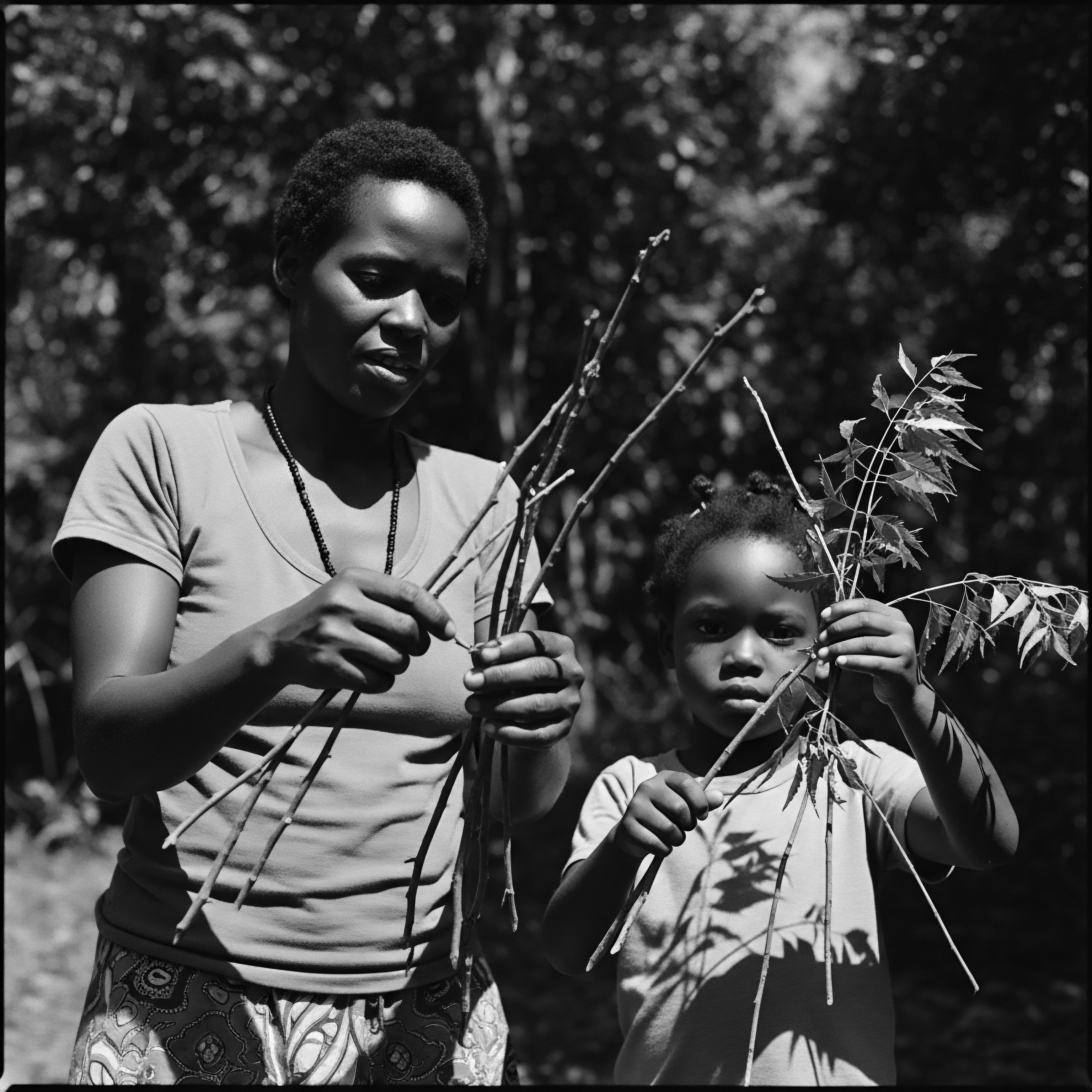
The Foundational Lexicon of Textured Hair Care
The terms we use today, like ‘coily,’ ‘kinky,’ or ‘curly,’ are relatively modern descriptors. Ancient civilizations, however, developed their own rich vocabularies rooted in their environment and communal practices. Though a direct translation is often lost to time or context, we can infer their lexicon from the tools, ingredients, and visual depictions that remain.
Terms for specific herbs, oils, or clays would have been household knowledge, perhaps even imbued with spiritual significance. The act of cleansing might have been described with words evoking purification, while styling might have carried terms suggesting adornment or preparation for ritual.
Consider these examples of terms and their likely connections within ancient care:
- Sheanut Butter ❉ Likely referred to with a term associated with ‘fat’ or ‘butter of the trees’ in West African languages, used as a powerful emollient.
- Red Ochre ❉ In various African traditions, a word connoting ‘earth pigment’ or ‘sacred clay,’ used for coloring and protection.
- Kohl ❉ An ancient Egyptian term for ‘eye cosmetic,’ but often used for hair darkening and styling, suggesting ‘darkness’ or ‘intensity.’
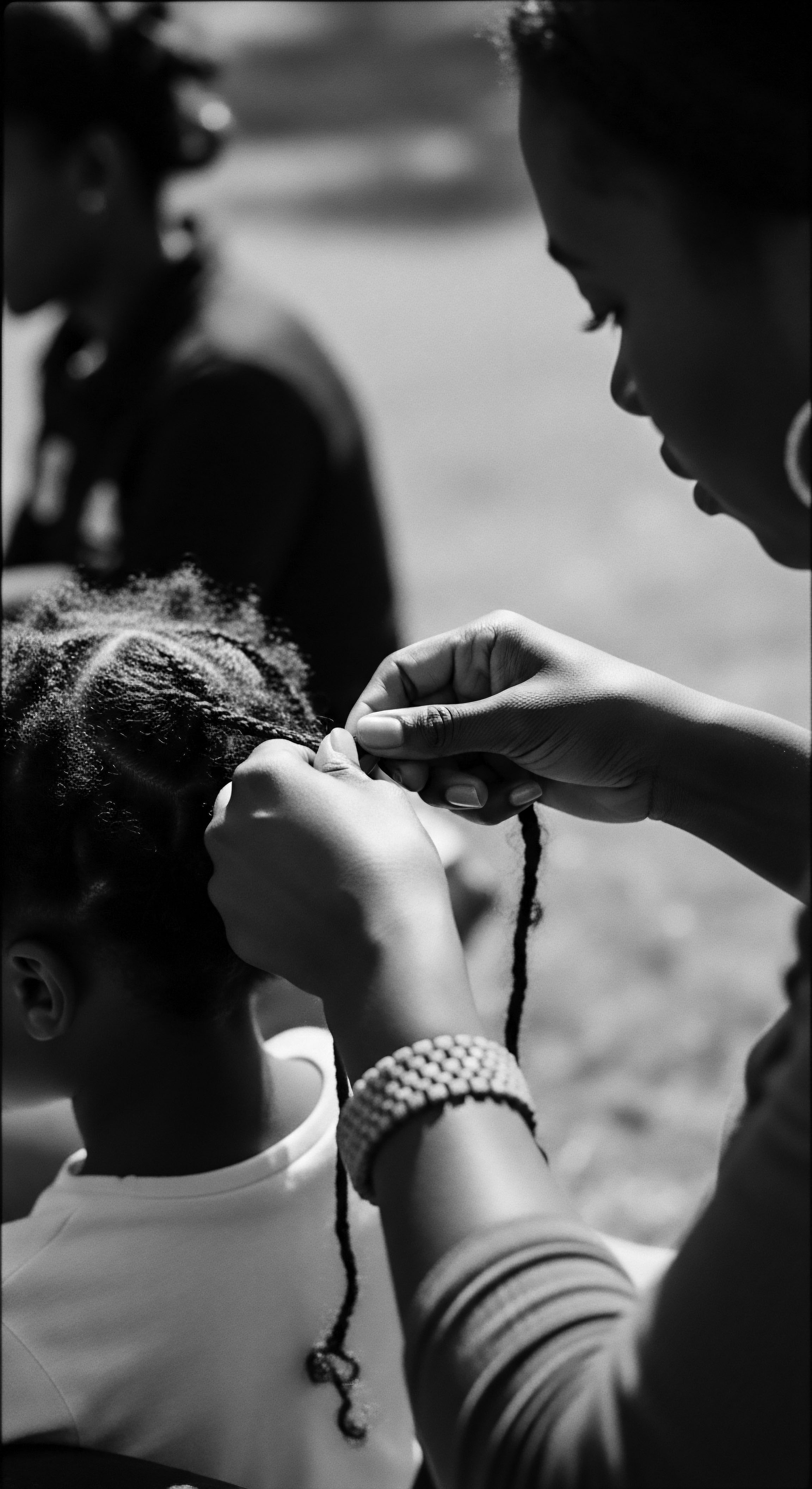
Cycles of Growth and Environmental Influences
The growth cycle of textured hair, with its characteristic slower growth rate and higher fragility compared to other hair types, would have been implicitly understood by ancient caretakers. They observed the shedding, the new growth, and the overall journey of a strand. Environmental factors, like the intense sun, wind, and dry air prevalent in many ancient African and Middle Eastern regions, profoundly shaped their care routines.
These conditions necessitated practices that minimized moisture loss, protected the scalp from harsh elements, and prevented mechanical damage during daily life and labor. The ingenuity of their solutions, from rich oil applications to protective styles, arose directly from this deep ecological awareness.
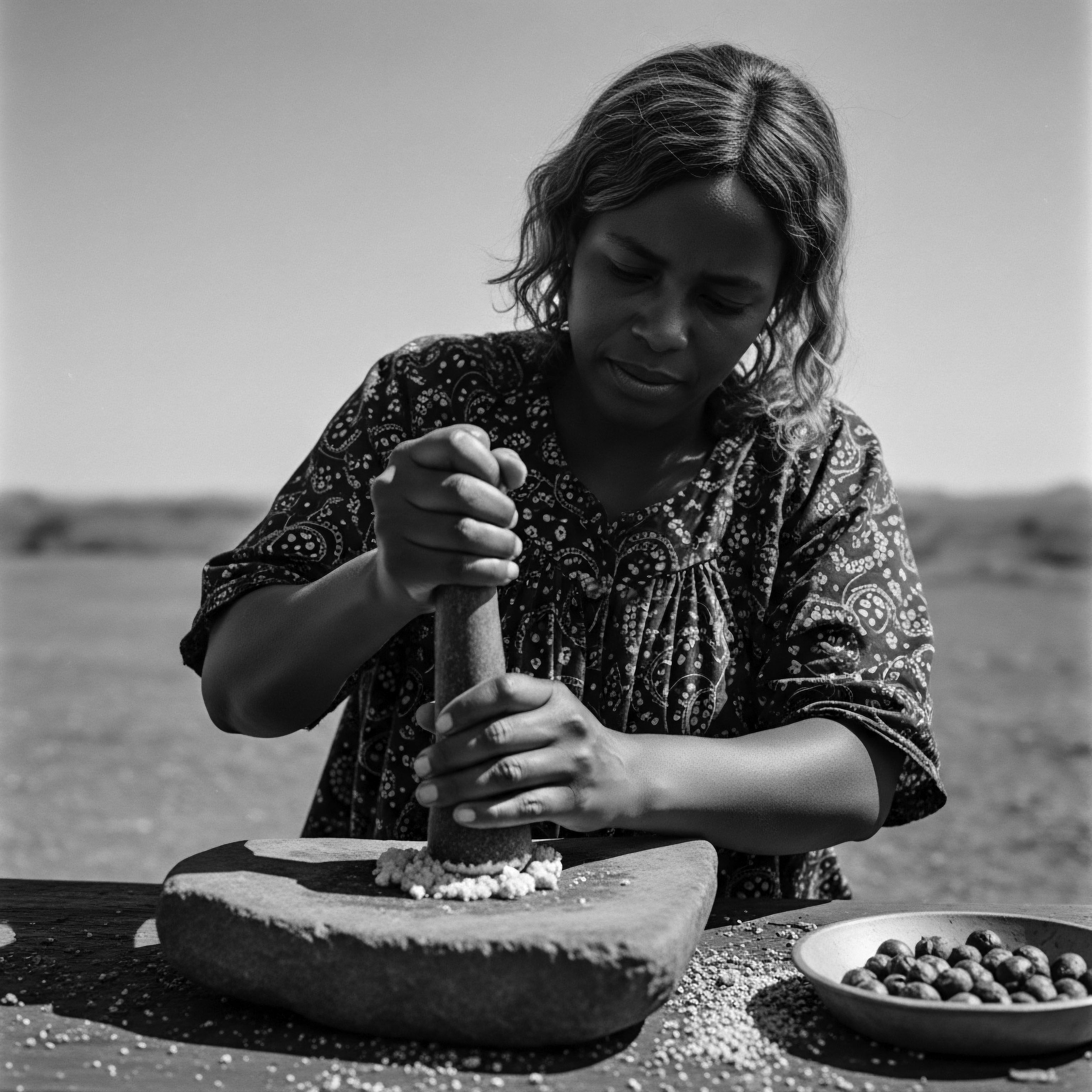
Ritual
The transition from simply understanding textured hair’s nature to actively tending it transforms into a tapestry of rituals. These were not random acts, but deliberate, often communal practices deeply interwoven with cultural identity and spiritual belief. The art of styling and the science of hair health converged in these ancient spaces, offering a vibrant testament to the ingenuity and care bestowed upon hair across the ages. The very act of combing, oiling, or braiding carried weight, a silent communication of self, lineage, and belonging.
Ancient civilizations, particularly those in Africa and the Middle East, developed sophisticated techniques and utilized tools born from their immediate environments. The preservation of hair and scalp health was paramount, not only for aesthetics but also for practical reasons like protection from the elements and prevention of infestations. The heritage of these practices speaks to an enduring wisdom that transcends millennia.
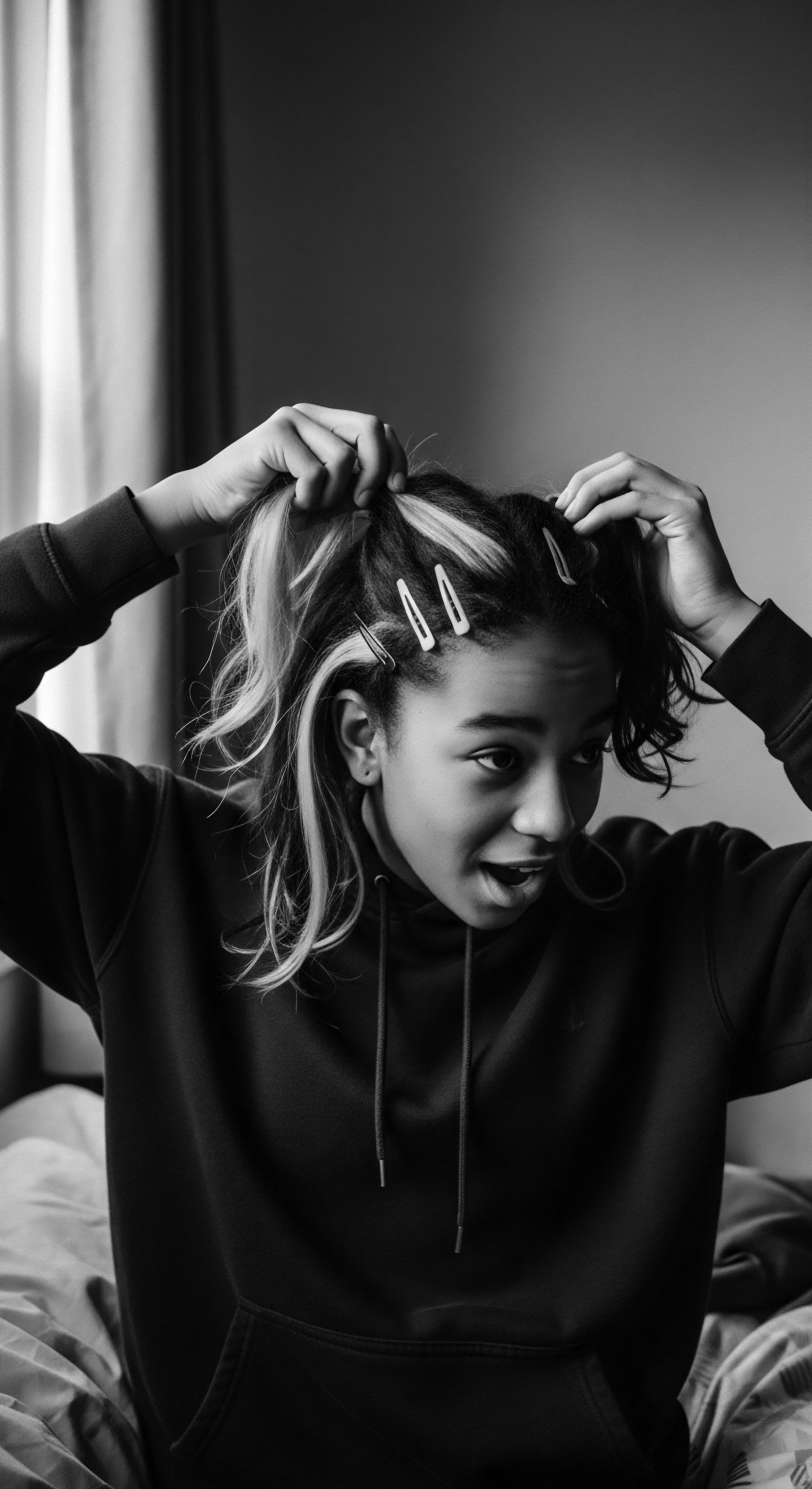
Ancestral Roots of Protective Styles
Protective styling, a practice widely embraced today by individuals with textured hair, finds its genesis in ancient civilizations. These styles, often involving intricate braiding, twisting, or coiling, were primarily designed to shield the delicate hair strands from environmental stressors—be it the harsh sun, wind, or dust—and minimize manipulation, thereby reducing breakage. The variety and complexity of these styles were astounding, each carrying its own cultural code and historical significance.
In ancient Egypt, for instance, both men and women adorned elaborate braided styles, sometimes augmented with extensions made from human hair, wool, or plant fibers. These styles, often coated with beeswax or plant resins, were not only aesthetic but also served as a protective barrier against the dry desert air and lice (Fletcher, 2017). The precision and durability of these ancient braids, evidenced in mummified remains, suggest an advanced understanding of tension, sectioning, and secure fastening—skills that resonate with modern braiding techniques. The care taken to preserve these styles points to a deep valuing of hair’s health and appearance, connecting directly to our heritage of valuing and maintaining textured hair.
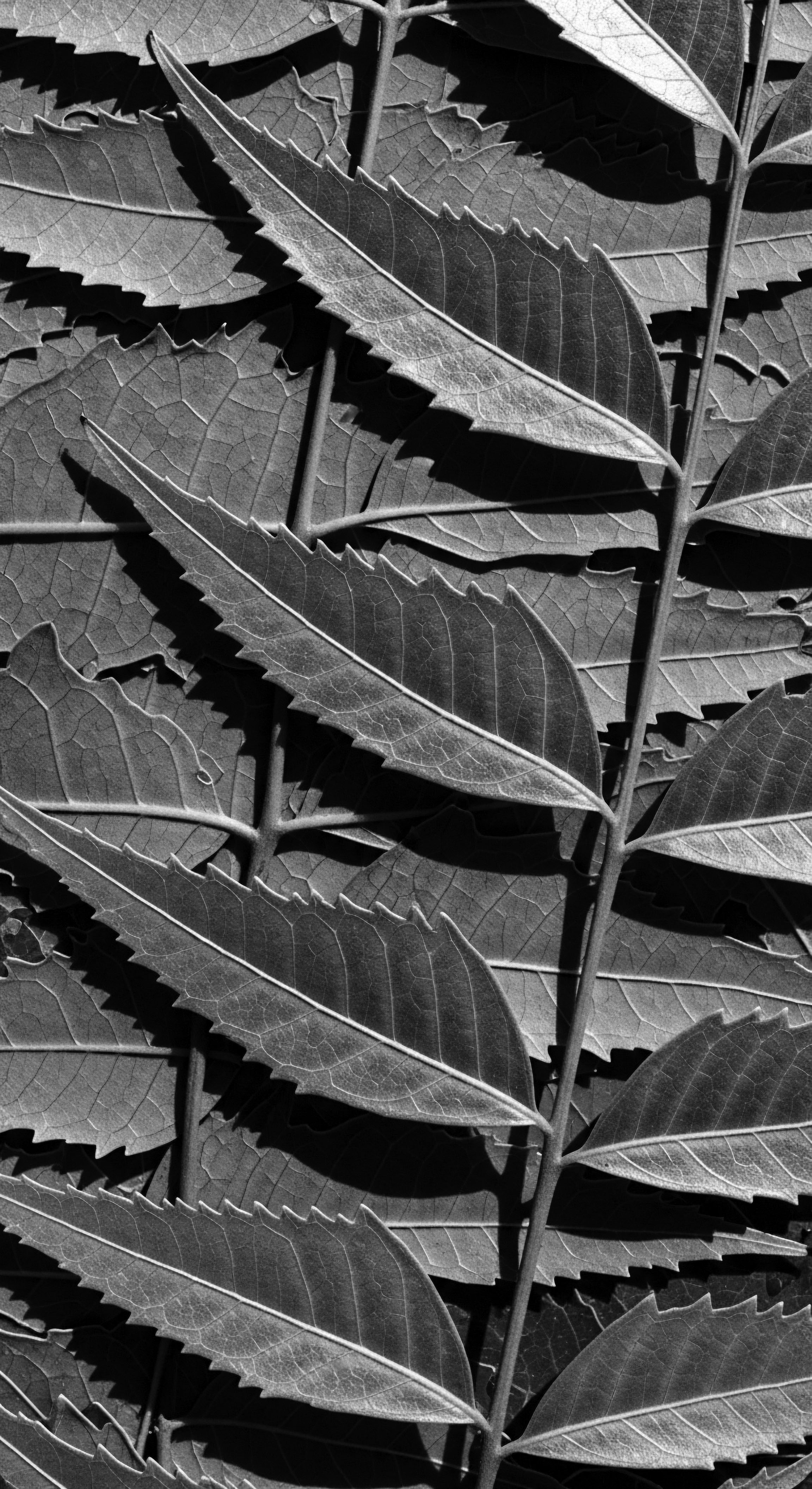
Traditional Natural Styling and Definition
Defining curls and coils without modern products was an art form in ancient times. Rather than chemical agents, ancient societies relied on natural emollients and techniques that encouraged the hair’s inherent curl pattern. Oils, butters, and various plant extracts were applied to condition the hair, reduce frizz, and give it a healthy sheen.
For cultures accustomed to working with textured hair, water was often the first ingredient for styling. After cleansing, hair might be left damp, and then specific oils or butters—like shea butter in West Africa, or olive oil and moringa oil in North Africa and the Middle East—were applied to seal in moisture and enhance the curl. Finger coiling or simple twisting, sometimes followed by air-drying, would have helped set patterns naturally. These methods, steeped in centuries of observation, speak to a patient, respectful engagement with the hair’s natural inclinations.
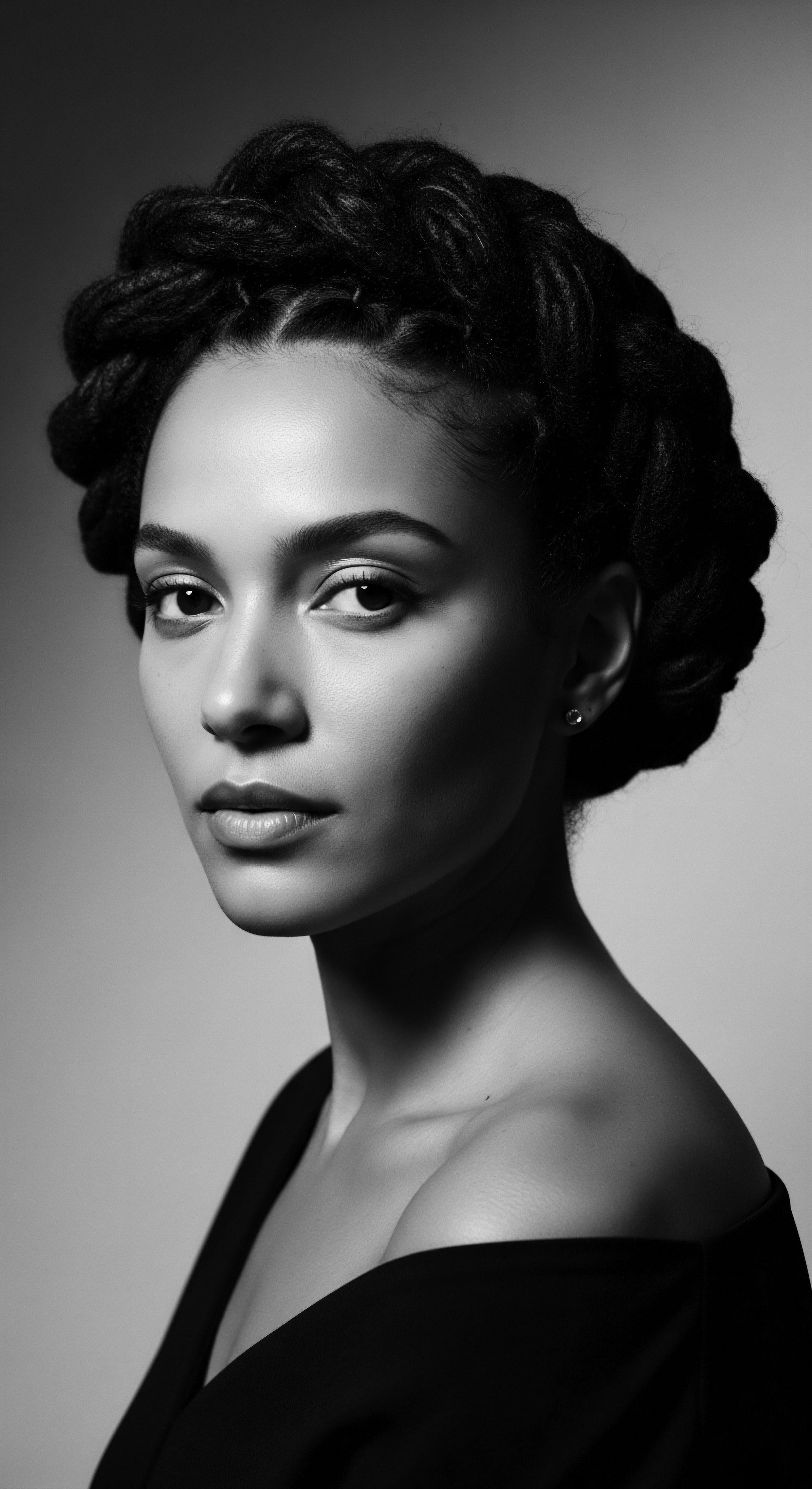
How Did Ancient Tools Shape Styling Heritage?
The tools used in ancient hair care were simple yet effective, crafted from materials readily available in their environment. Combs were fashioned from bone, wood, or ivory, often with wide teeth suitable for detangling textured hair without causing undue stress. Hairpins and bodkins, made from bone, metal, or wood, served to secure elaborate styles and adornments. The absence of heat tools, as we know them today, meant that styles relied on natural setting, braiding, twisting, and the use of moisturizing and holding agents.
Consider this look at ancient hair tools:
| Tool Combs |
| Ancient Materials Wood, Bone, Ivory |
| Traditional Use for Textured Hair Gentle detangling, sectioning, scalp stimulation, styling aid. |
| Connection to Modern Heritage Practices Wide-tooth combs, detangling brushes, and scalp massagers continue this tradition. |
| Tool Hairpins/Bodkins |
| Ancient Materials Wood, Bone, Metal |
| Traditional Use for Textured Hair Securing elaborate styles, creating partings, adding adornment. |
| Connection to Modern Heritage Practices Decorative pins, hair forks, and hair sticks echo these functions. |
| Tool Hair Adornments |
| Ancient Materials Shells, Beads, Gold, Clay, Feathers |
| Traditional Use for Textured Hair Symbolic display, tribal identification, celebration, beauty. |
| Connection to Modern Heritage Practices Beads, cowrie shells, and metallic cuffs remain popular cultural adornments. |
| Tool These tools, simple in form, represent a continuous lineage of care and creative expression for textured hair, linking ancestral methods to present-day aesthetics. |
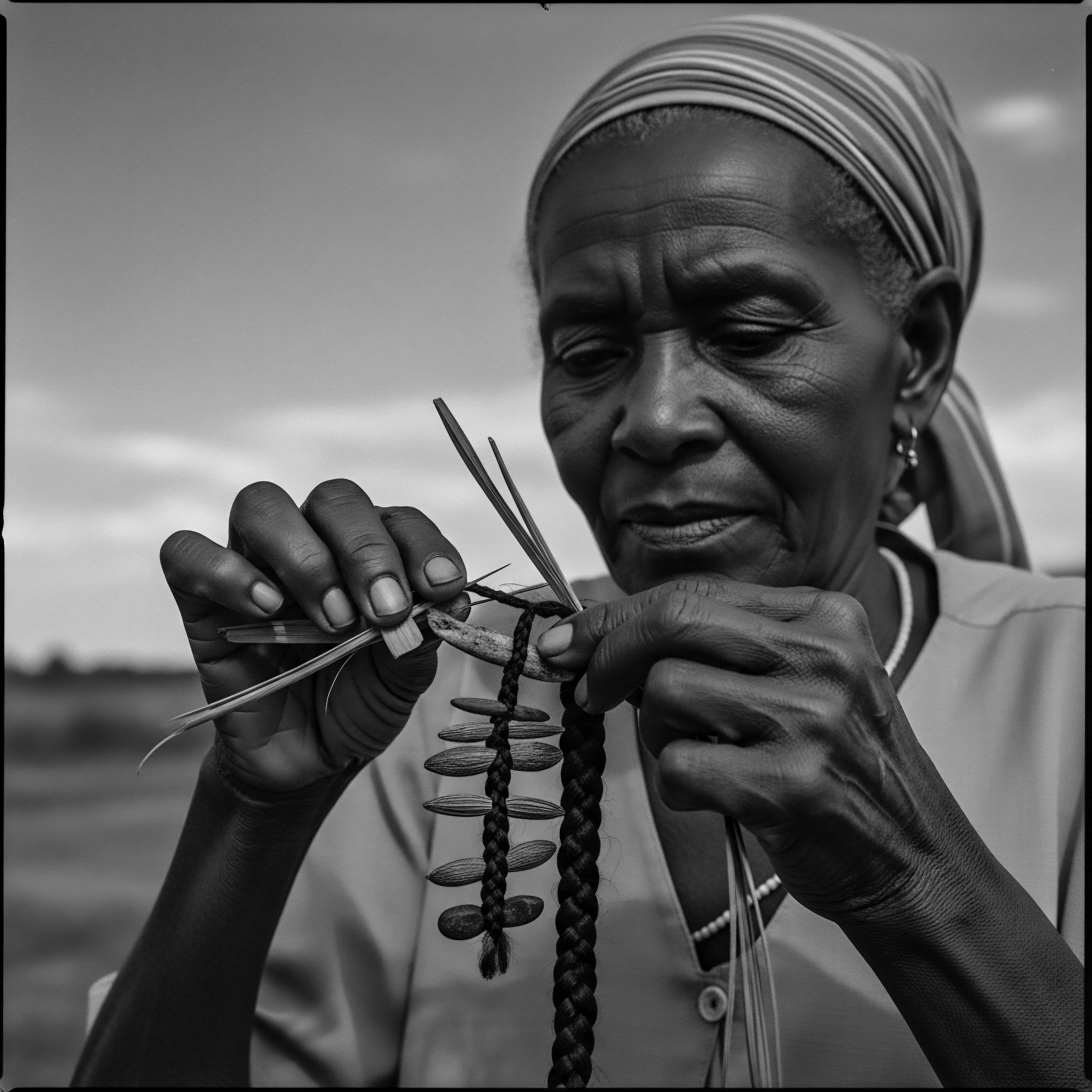
Wigs and Hair Extensions in Antiquity
The use of wigs and hair extensions was widespread in many ancient societies, particularly among the elite in Egypt and Mesopotamia. These were not simply fashion statements; they often served practical purposes, offering protection from the sun, providing a clean alternative to natural hair, and signifying status or religious roles. Ancient Egyptian wigs were meticulously crafted, often from human hair, dyed and curled, and sometimes infused with fragrant oils and resins.
These wigs, designed to mimic elaborate natural styles, suggest a strong appreciation for the volume, shape, and structure that textured hair naturally offered. The practice speaks to a heritage of enhancing and transforming one’s appearance through hair, a tradition that continues with great vibrancy today.
Ancient methods, rooted in environmental harmony and cultural understanding, offer timeless insights into textured hair vitality.
The meticulousness of wig-making, often involving the attachment of individual strands or pre-braided sections onto a cap, speaks to an advanced level of craftsmanship. It also points to an understanding of hair’s role in conveying social messages—a visual shorthand for wealth, power, or religious piety. These traditions of adornment and enhancement, born of ancient artistry, form an undeniable part of the heritage of hair manipulation that continues to captivate and express.
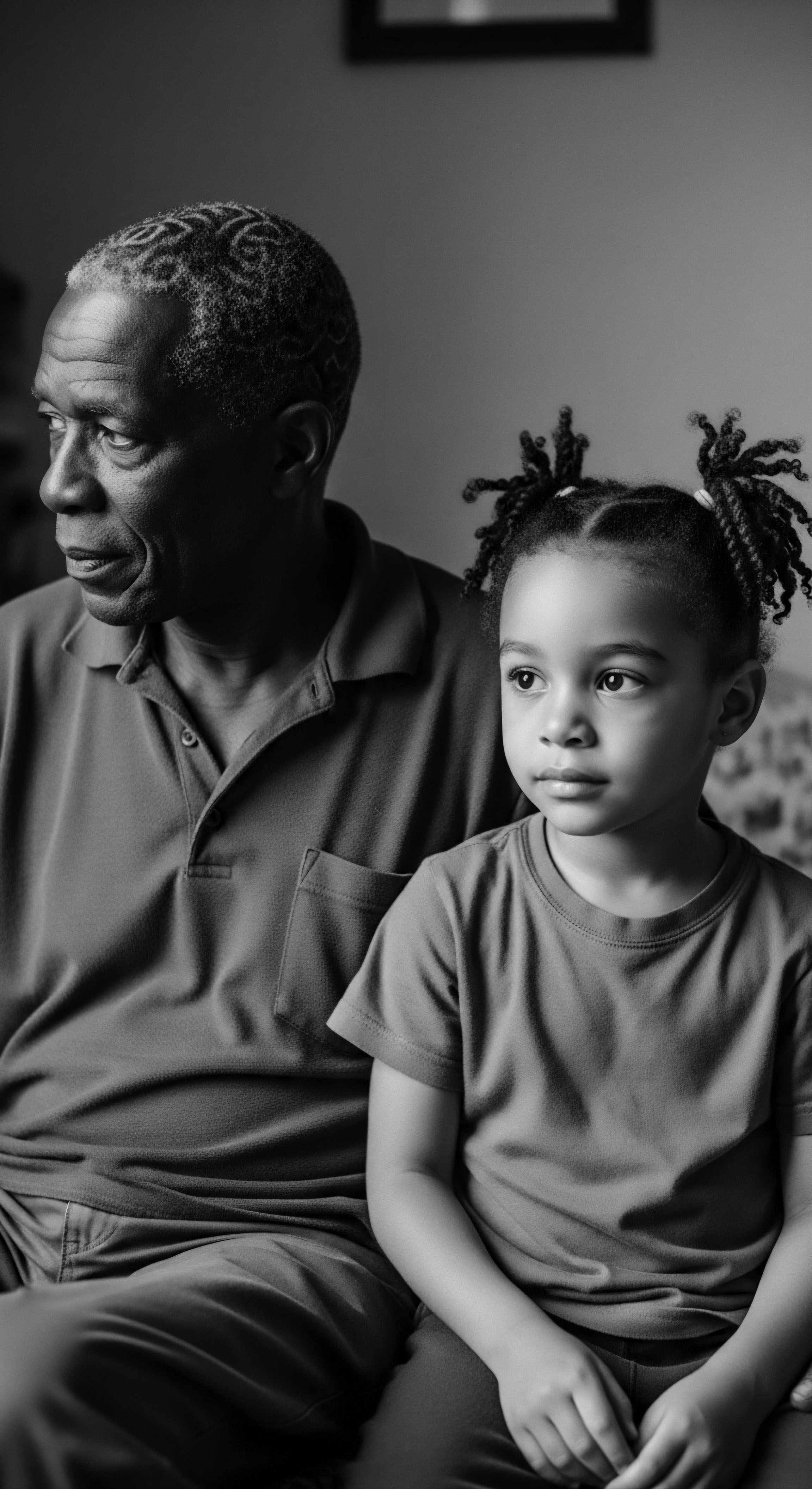
Relay
The legacy of ancient hair care practices, particularly for textured hair, flows through time like a steady stream, informing and enriching our contemporary understanding. This is not a static history, but a living, breathing continuity, a relay race of wisdom passed from ancient hands to modern practitioners. The integration of ancestral knowledge with evolving scientific understanding allows us to appreciate the depth of care that defined these earlier civilizations, often drawing from an innate connection to the natural world and a profound understanding of holistic wellbeing. This comprehensive view helps us bridge the perceived gap between ‘ancient’ and ‘modern,’ revealing a shared heritage of devotion to healthy, expressive hair.
The sophisticated approaches of our ancestors were often rooted in observation and the potent properties of plants and minerals. Their routines, while seemingly simple, were deeply strategic, addressing the specific needs of textured hair with materials provided by their immediate environment. This holistic approach recognized hair not as an isolated entity, but as an extension of one’s overall health and spirit.
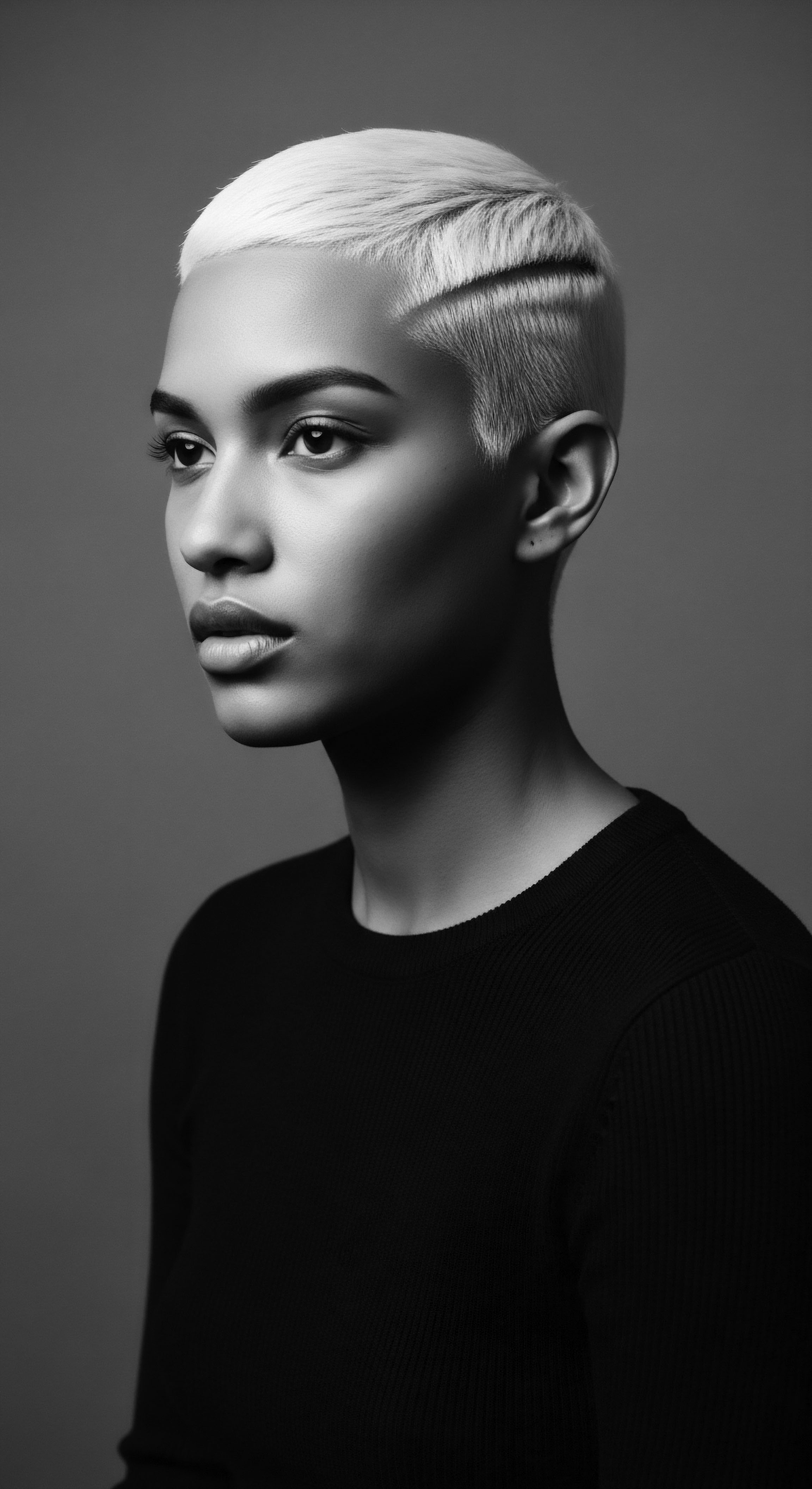
Building Regimens from Ancestral Wisdom
Ancient civilizations did not follow prescriptive, multi-step routines like today’s detailed regimens, yet their practices formed cohesive, often lifelong, care systems. These regimens were intrinsically linked to climate, available resources, and cultural beliefs. For instance, in regions with abundant olive trees, olive oil became a staple for moisturizing and sealing. In communities near shea trees, shea butter held prominence.
The regimen, therefore, was less about product layering and more about consistent, gentle care with natural, locally sourced ingredients. This ancestral wisdom champions simplicity and efficacy, recognizing that consistent care, tailored to individual needs and environment, brings about lasting hair health.
An interesting example of ancestral regimen principles comes from the Himba people of Namibia. Their unique practice involves covering their hair and skin with a mixture called “otjize,” a paste made from butterfat, red ochre, and aromatic resin (Jacobsen, 2018). This mixture serves multiple purposes ❉ it cleanses the hair, provides significant moisture and conditioning, offers sun protection, and gives the hair its characteristic reddish hue.
This is a comprehensive, culturally specific regimen that has been maintained for centuries, a testament to its effectiveness and its deeply ingrained role in Himba identity and heritage. It demonstrates a holistic approach where hygiene, aesthetics, protection, and cultural identity are inextricably linked through a single, foundational practice.

The Nighttime Sanctuary and Bonnet Heritage
The concept of protecting hair during sleep is not a modern innovation; its roots run deep within the heritage of textured hair care. While specific ‘bonnets’ as we know them might be a more recent development, the principle of covering hair at night to prevent tangling, moisture loss, and breakage was undoubtedly practiced. Head coverings, often made from soft cloths or wraps, served this purpose. In many African cultures, headwraps were worn daily, symbolizing status, mourning, or celebration, and would naturally extend to nighttime use to preserve intricate styles.
This careful nighttime protection underscores an understanding of hair’s fragility. The friction against rough sleeping surfaces could lead to dryness and breakage, a challenge keenly observed by ancient caretakers. Their solutions, whether simple fabric wraps or more elaborate coverings, reflect a consistent dedication to maintaining hair health, a heritage of foresight and preventative care that continues to define textured hair regimens today.
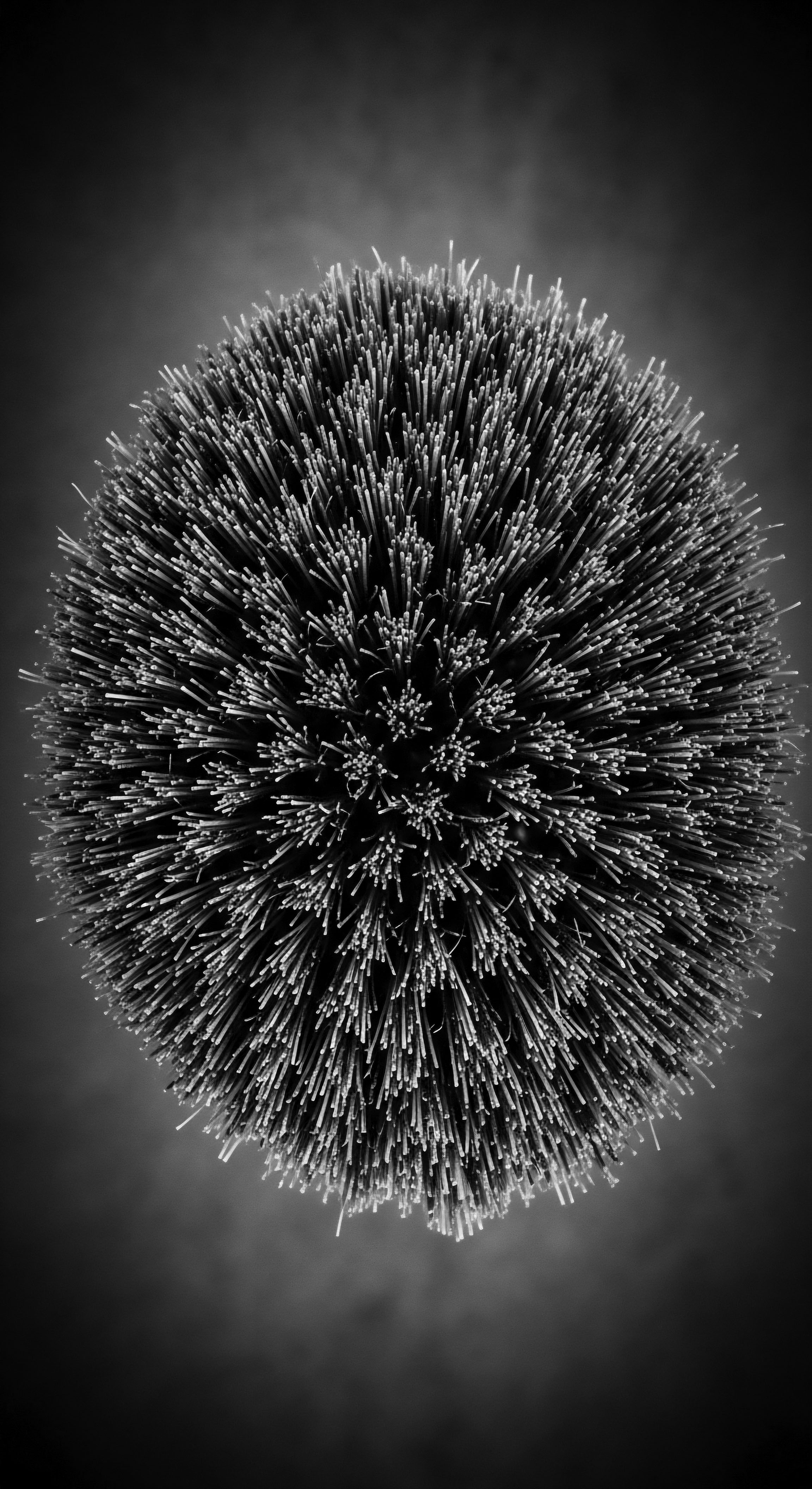
Ingredient Deep Dives for Textured Hair Needs
The pharmacopeia of ancient textured hair care was the natural world itself. Understanding the properties of local plants, minerals, and animal products was crucial.
- Oils ❉ Olive, moringa, castor, and sesame oils were used for moisturizing, sealing, and promoting growth.
- Butters ❉ Shea butter, cocoa butter, and kokum butter provided intense conditioning and protection.
- Clays ❉ Bentonite and rhassoul clays, found in North Africa and the Middle East, were used for gentle cleansing and detoxification.
- Herbs ❉ Aloe vera, hibiscus, henna (for conditioning and color), and various local botanicals were used for their soothing, strengthening, or stimulating properties.
These ingredients were not simply applied; they were often combined, heated, or fermented to maximize their efficacy, reflecting a sophisticated understanding of natural chemistry. The efficacy of these traditional components is often validated by modern scientific analysis, which reveals their richness in vitamins, antioxidants, and essential fatty acids, confirming the ancestral wisdom.
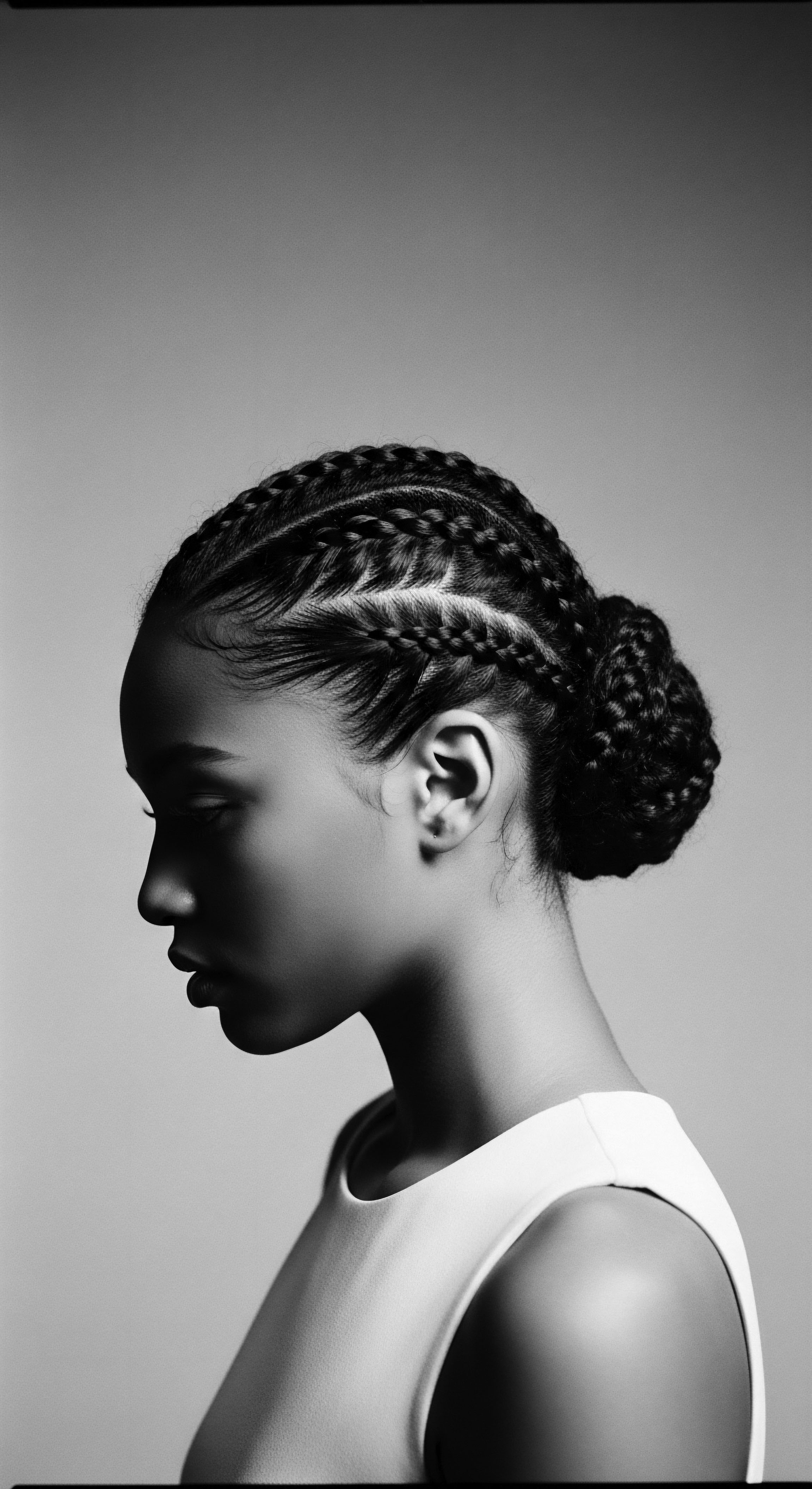
Addressing Hair Challenges with Ancient Wisdom
Problems like dryness, breakage, and scalp irritation were as relevant to ancient civilizations as they are today. Their solutions, however, were rooted in observation and the judicious use of natural remedies. For dryness, rich oils and butters were consistently applied.
Breakage was minimized through protective styling and gentle detangling with wide-toothed implements. Scalp issues were addressed with cleansing clays and herbal rinses possessing anti-inflammatory or antiseptic properties.
The approach was often preventative and responsive. If the hair felt brittle, more oil was applied. If the scalp was itchy, a specific herb was sought out.
This immediate, intuitive response, based on deep familiarity with the hair and its environment, created a problem-solving compendium that was both practical and holistically integrated into their daily lives. The ancient wisdom here is in listening to the hair, understanding its signals, and responding with the gifts of the earth.
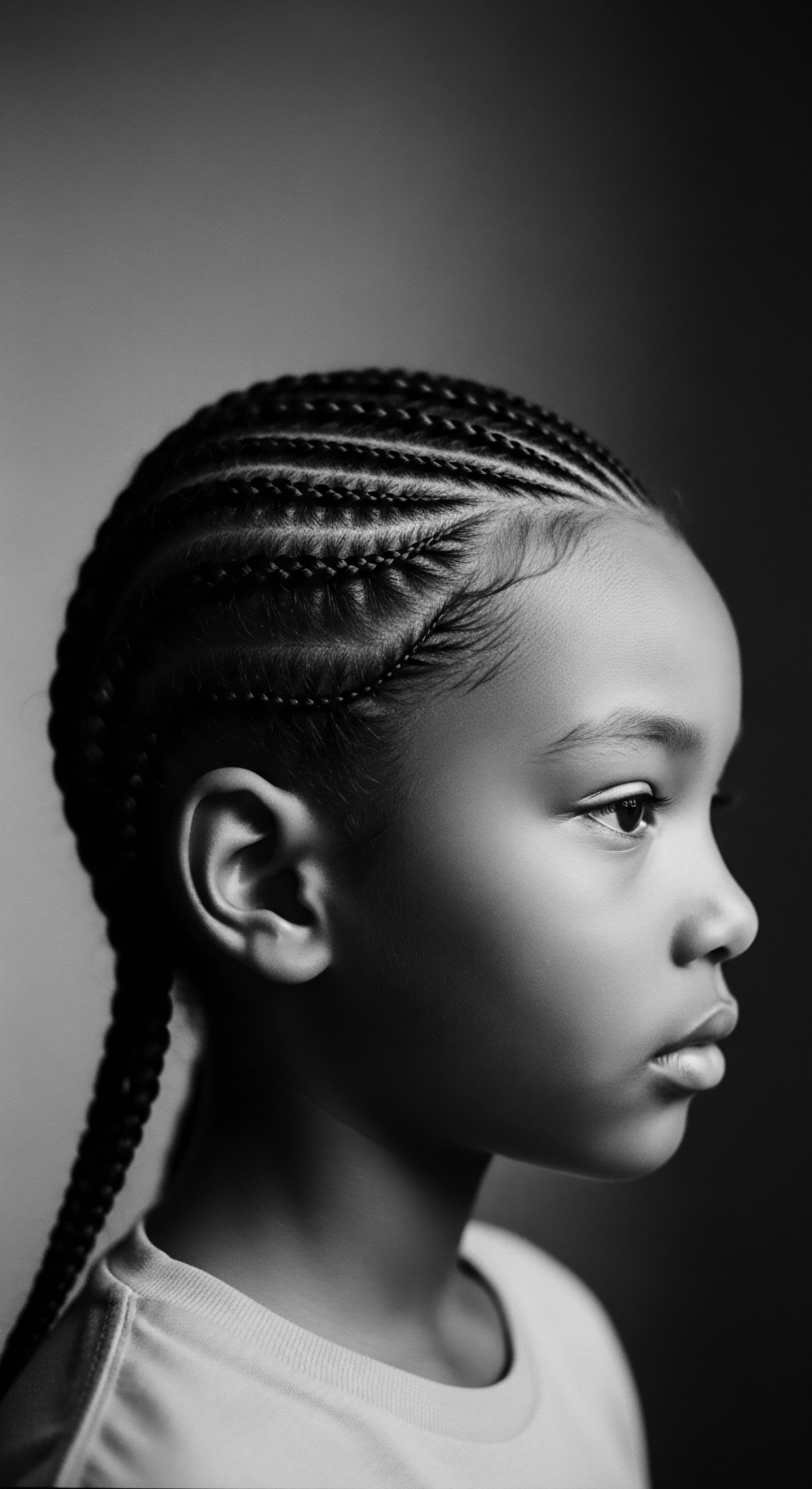
Holistic Influences on Hair Health
For many ancient societies, health was viewed holistically; the body, mind, and spirit were interconnected. Hair health was no exception. Diet, spiritual practices, community roles, and even the alignment with seasonal cycles played a part in the overall wellbeing of the hair. Nutritional intake of fresh produce, lean proteins, and healthy fats from indigenous diets contributed to strong hair from within.
The psychological aspect of communal grooming, the bonding over shared hair rituals, fostered a sense of peace and belonging that undoubtedly benefited hair vitality. This ancestral philosophy reminds us that true hair radiance comes not just from external applications but from a harmonious internal and communal existence.
The endurance of textured hair traditions underscores a living heritage, bridging ancient rituals with contemporary understanding.
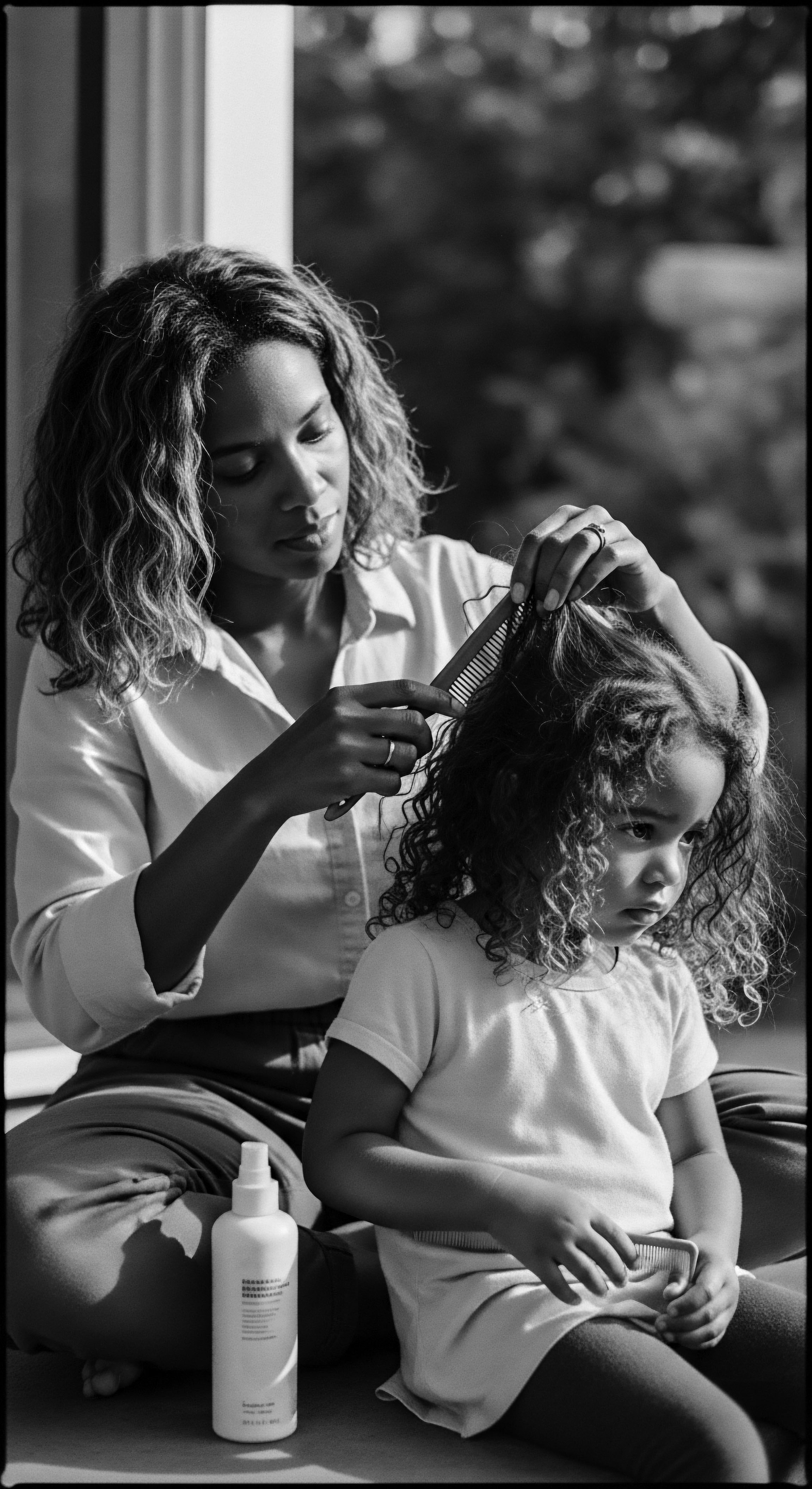
Reflection
To journey through the history of how ancient civilizations cared for their textured hair is to trace the very soul of a strand. It reveals a lineage not of struggle, but of ingenious adaptation, profound respect, and undeniable artistry. From the meticulously preserved braids of Nubian queens to the protective stylings of West African communities, we glimpse a world where hair was not just an adornment, but a living archive of identity, status, and spiritual connection. The wisdom of these ancestors, their deep understanding of natural resources, their patient dedication to protective measures, and their integration of hair care into communal life, speaks across the millennia.
We stand today, inheritors of this magnificent heritage. The rhythm of our hands as we detangle, the scent of oils as we moisturize, the intricate patterns we sculpt—each act is a quiet echo of those who came before us. This is a legacy of resilience, of beauty cultivated against all odds, and of an unwavering connection to the earth’s bounty. The conversation about textured hair care is therefore never solely about products or techniques; it is about remembering, about honoring, and about carrying forward the luminous wisdom of our forebears, ensuring that the soul of each strand continues to tell its ancient, vibrant story.
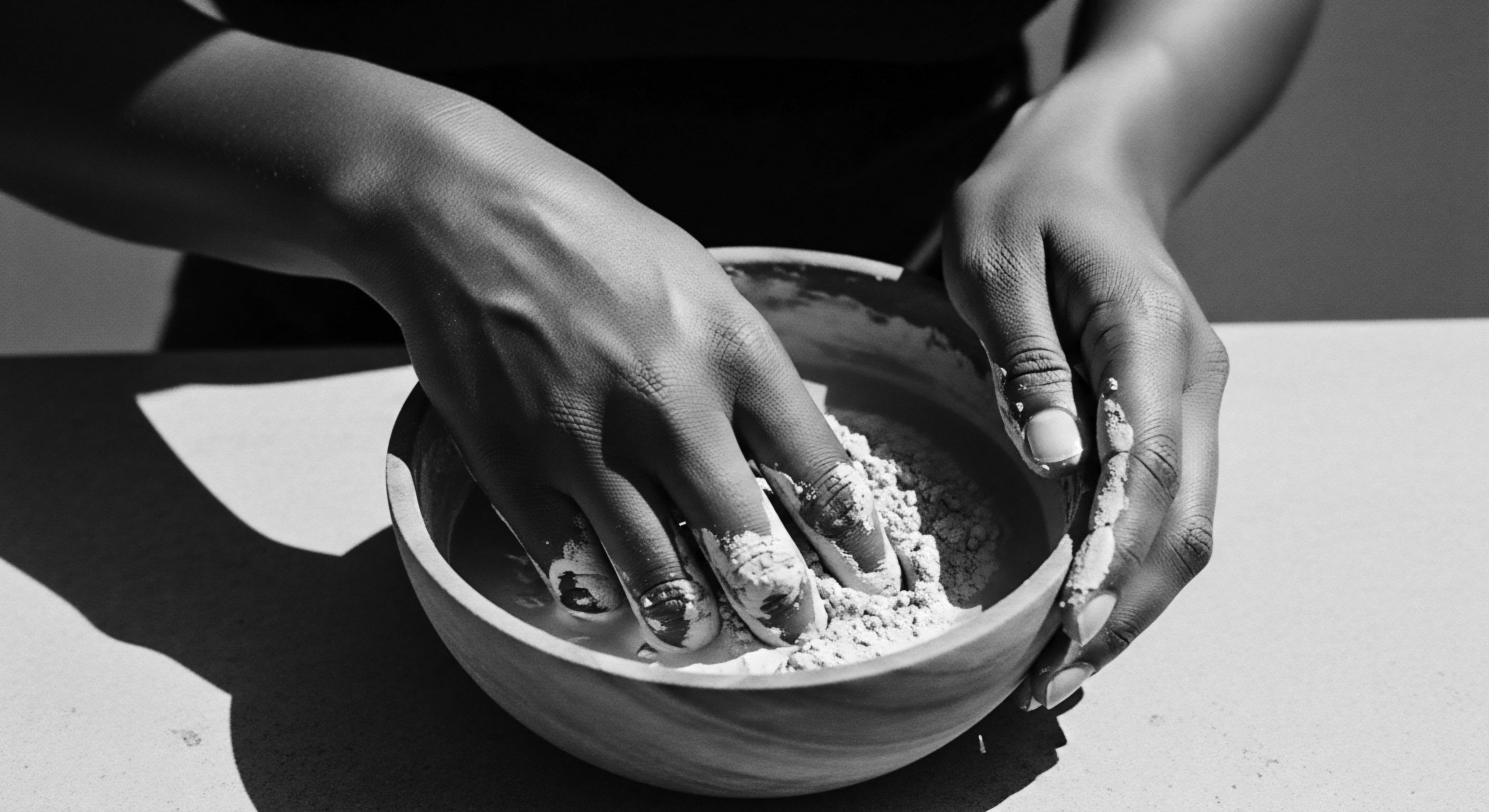
References
- Smith, S. (2011). Worshipping Athena ❉ Panathenaia and Politics in Classical Athens. Cornell University Press.
- Fletcher, J. (2017). The Story of Egypt ❉ The Civilization that Shaped the World. Basic Books.
- Jacobsen, C. (2018). The Himba and the Ovaherero ❉ Creating History and Identity in Southern Africa. Basler Afrika Bibliographien.
- Blakely, A. J. (2014). Black Skin, White Masks ❉ The Classic Study on Colonialism, Racism, and Identity. Grove Press.
- Byrd, A. D. & Tharps, L. L. (2001). Hair Story ❉ Untangling the Roots of Black Hair in America. St. Martin’s Press.
- Mercer, K. (1994). Welcome to the Jungle ❉ New Positions in Cultural Studies. Routledge.
- Rastogi, S. & Puri, V. (2017). Indian Herbal Cosmetics. Springer.
